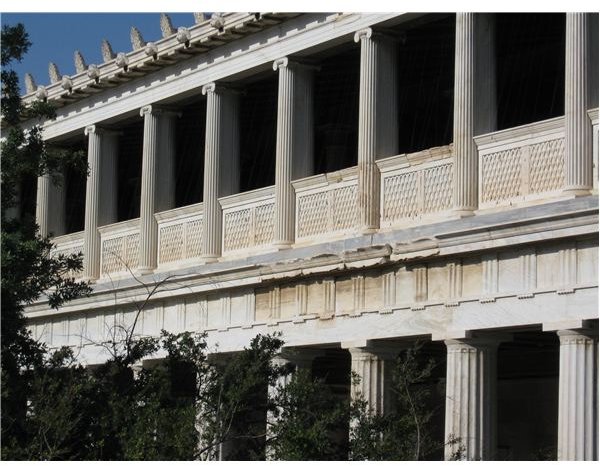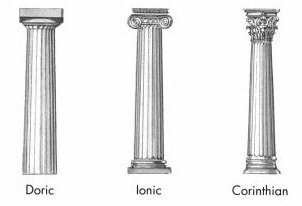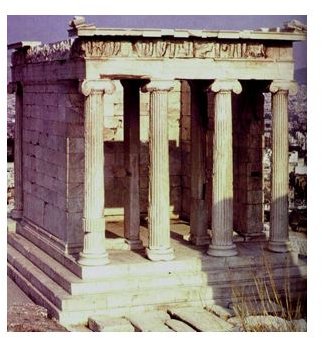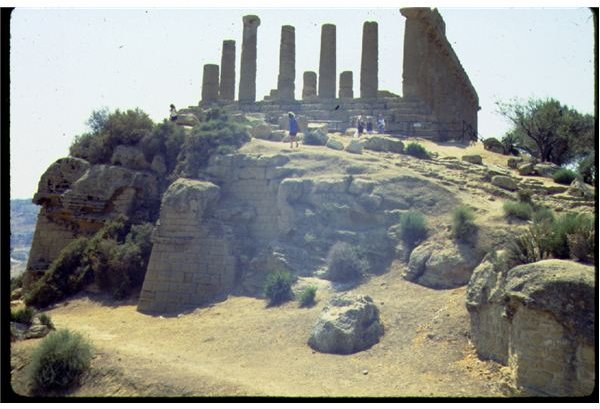Classical Greek Architecture: Doric, Ionic, and Corinthian Styles
Ancient Greek Architecture refers to the architectural style of the Greek period which becan in the 8th century BC and lasted until the 6th century BC. Much of the buildings built during the Greek colonization period couldn’t stand the test of time as they were mainly built from mud, wood, and clay. Only the ruined structures and ground plans of these buildings have remained. Discover more about their special features.
Materials Used for Construction

Buildings were mainly made from wood, which were used as supporting piers or beams. Apart from wood, plaster and unbaked bricks were also used for private homes or buildings. The walls and columns of private houses were made from marble and limestone. Metals such as bronze were used for decoration and special designs.
Architecture and Design Styles
Ancient Greek architectural styles were divided on the basis of the design of the columns, which formed the main part of Ancient Greek temples. The columns of their temples are probably the most well-known form of Greek Architecture. Temples also served as a treasure storage place so they often had inner rooms.

Two of the main styles are Doric and Ionic. Ionic style buildings were elegant and thinner in width. This style, which first began in eastern Greece, resulted in some of the most beautiful Greek temples. Ionic architecture style consisted of columns which stood on a base that separated the shafts supporting the columns. The capital, or top feature, of the columns had paired scrolling volutes and a neck on which the capital rested. Ionic structures were more visually interesting than Doric.
Doric architectural style was a bit more formal with its columns directly standing on the flat pavement. The temples made in this style didn’t have a base but had vertical supporting shafts with symmetrical vertical grooves. The top of the columns had smooth capitals that flared out to meet a square abacus or structural design. This architectural style has been the synonym for Greek Architecture and is seen in the ruins of several Greek buildings.
The Corinthian style was also used for constructing Greek Buildings; however it was not prominently used. The Corinthian style was similar to the Ionic style, but had designs of leaves made at the volute, below the capital. However, unlike Ionic and Doric Style, the Corinthian style didn’t have a neck that formed the base of the capital. Moreover, the columns were also more slender and had a concave shape beneath the capital.
Other Features

Another notable feature of Classical Greek architecture is a fountain house or a building with a fountain at the center. These allowed women to collect water in vases or jars. A Stoa, was a narrow hall opened at one side, which was used to house shops in the Greek towns.
Many Greek towns also had gymnasiums and recreational centers for male citizens. The recreational centers didn’t have roofs and were used for organizing gymnastic contests. There were also public buildings which served as meeting places or civil courts. Greeks did not use domes in construction so they could not have buildings with spacious interiors. Instead, the roofs of the buildings were supported by a row of symmetrical columns. None of the remains of Greek architectural buildings present today have roofs as they were mainly made from perishable materials.
References
- Greek Architecture: http://www.crystalinks.com/greekarchitecture.html
- Image Credits: history for kids, bjcmsop, chalk.richmond.edu, cartage
